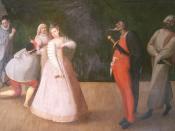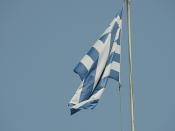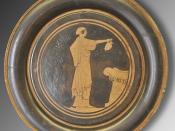The Italian Renaissance occurred from 1550 - 1700. The rapid economic growth in Italy during this time made it possible for the more wealthy citizens to endulge in alternate forms of entertainment. Wealthy families such as the Medicis began a system of patronage, in which they would finance artists to produce art in many forms. Italian theatre used the plays of ancient Greek and Roman theatre (dramas) as well as mediaeval theatre (religious plays) as a foundation.
Commedia dell'Arte
The main style used by theatre groups in Italy during this period was called commedia or Commedia dell'Arte. Commedia dell'Arte or "the comedy of professional artists" was a mainstay in Italian theatre during its renaissance. This included bits of comedy performed by different actors called lazzi. The type of comedy used in the Italian Renaissance was what is now known as slapstick or farce. This was a comedy style, which highlighted pain or misfortune occurring to the actors in a humorous context.
For the most part the actors in these comedies used no scripts. The actors were given a plot or scenario and acted out these plots in a humorous way. These performances were often vulgar and obscene. Standardize characters developed and appeared in familiar costumes and wearing masks.
The character standards for Commedia included these general outlines:
- Pantalone: A greedy old man, merchant or fool, often lustful, conniving, and
meddling.
- Dottore: A drunk, often proffesor or doctor dressed in a cap and gown.
- Capitano: A soldier who was braggadocios and cowardly.
- Inamorati: Young lovers who appeared quite normal compared to the rest of
the characters.
- "zanni": Foolish servants. Usually two servants, one being drunk and
more foolish than his cohort.
Neoclassicism
Neoclassicists were rigid critics of Italian drama. They developed rules for theatre performances...



Nice
I thought this was very well written, I really enjoyed reading your work. you had nice flow of thought and it was written in a very interesting way. keep up the good work and thanks for posting this
1 out of 1 people found this comment useful.